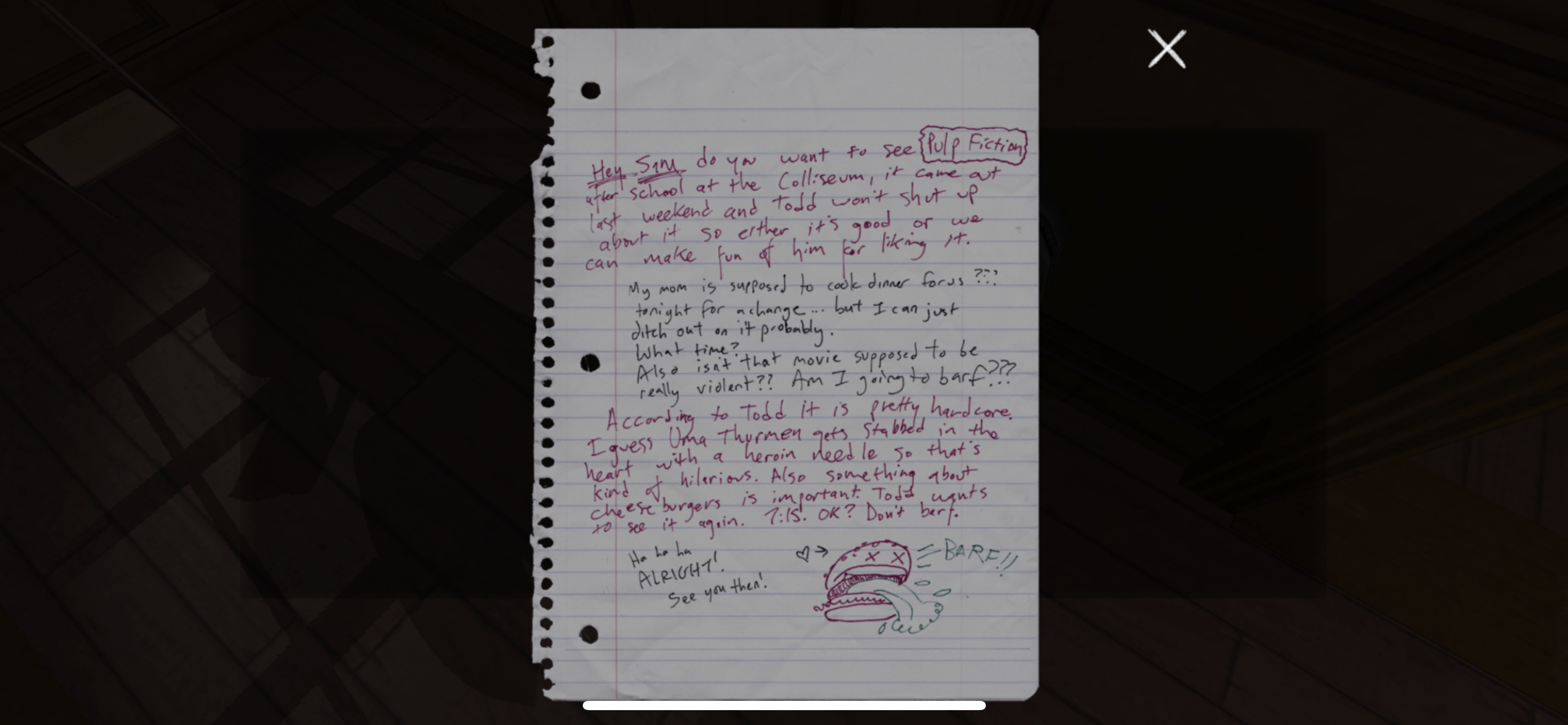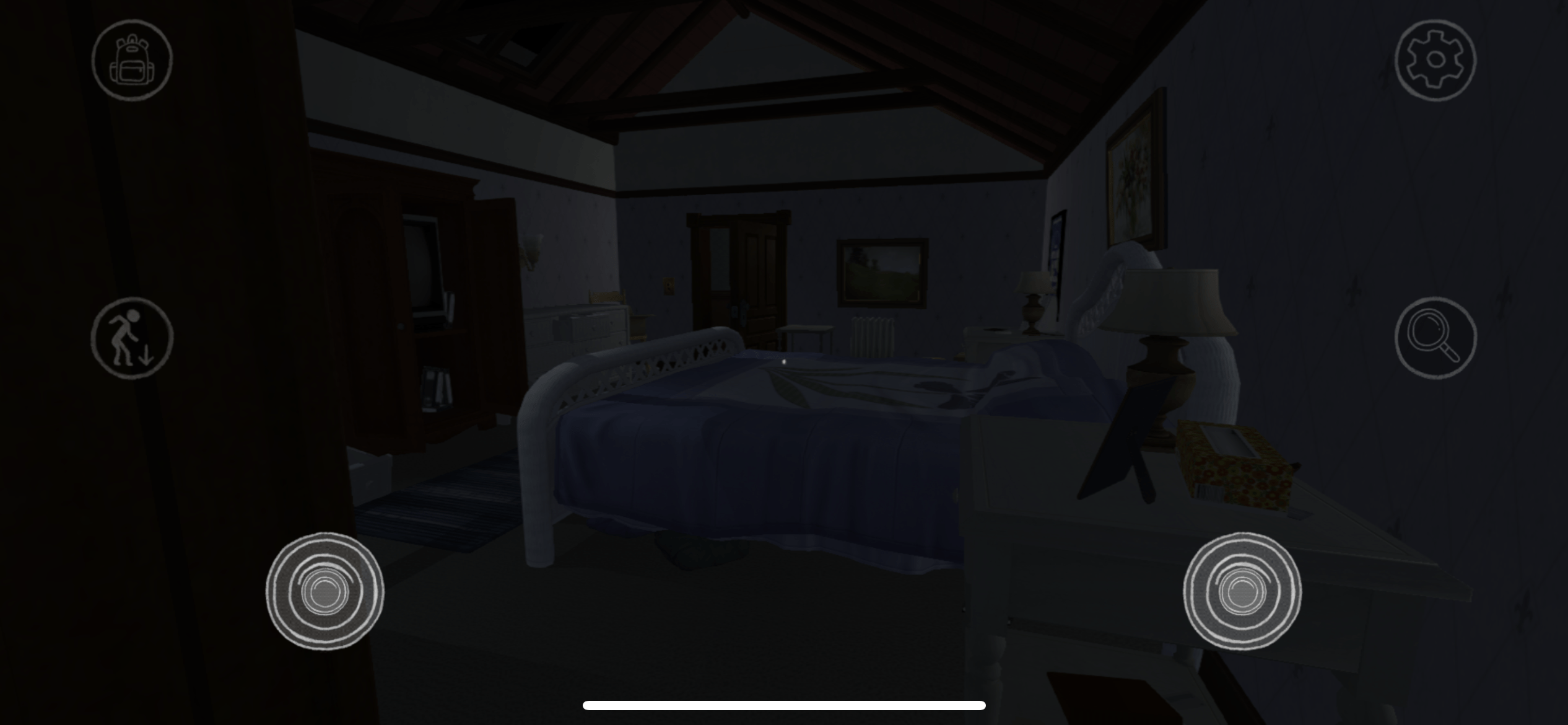The game that I chose is Gone Home, developed and published by The Fullbright Company in [[2013]]. I think the target audience of the game is actually adults and experienced gamers. I think this game is pretty slow, so it would be difficult to attract new gamers to it. It is more of a refreshing take on games.
I think the narrative is woven into the mystery in several ways with the help of some formal elements. The story essentially talks about how a girl returns home from studying abroad only to find out that her family is missing.
One of the important formal elements is that the player plays the perspective of the girl (single-player game) who is exploring an empty house. The other important formal element is the procedure of the game. The player is able to pick up different objects and examine them closely. It is neat because sometimes the audio is played when a specific object gets picked up and reveals more about the background story of the characters (this is also part of the fun of the discovery, which is mentioned in the next paragraph). The house creates a good boundary and clear objective for the user to keep exploring and unlock more rooms that are locked.
The game is fun because it invokes a lot of narratives and discoveries. The player has to explore the house to find out the clues to what happened (narration and discovery). The narration is woven through the game with the items that are picked up from different places. The items allow the user to construct a storyline and infer what happened to the protagonists’ family. The picture that I show below shows the items that the players can examine to learn more about the background of the story and infer what might have happened.
This also plays into the loops and arcs idea, the player explores the house, picks up objects, learns more about the clues, and that leads to more clues. The player is taught by the game that they should explore the house and examine different objects so that more clues can be unlocked. But at the same time, the process of getting up and down and picking up different objects could be a little repetitive and I feel like I am not learning anything new. To make this process better, I propose adding a sense of urgency to the game. For example, maybe add a time limit that limits the use of electricity in the house, so that only some lights can be turned on at the same time. In the picture shown below, you can see how the control is a little clogged on an iPhone. 


